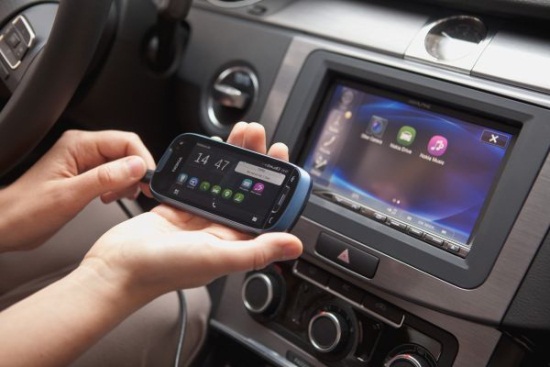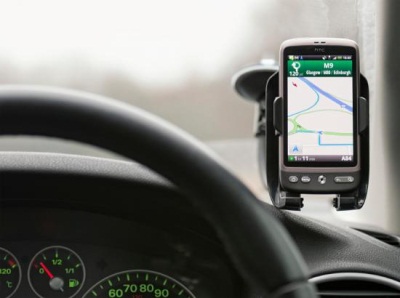Using Smartphones in Cars
Posted on Dec 11, 2017 in Safety | 4 comments

The NHTSA is currently trying to figure out how or whether to ban handheld devices like smartphones from use in cars. And the automakers are supporting such a ban or at least some restrictions.
But they are also very concerned that such a ban might force them to redesign their built-in systems. What a shame that would be.
No one should be surprised that a recent British study confirms that smartphone use while driving is much more dangerous than driving drunk. With a test group of 17-24-year-old drivers fooling around on Facebook, their reaction time slowed by about 38 percent. (Blood alcohol at the legal limit slowed reaction time by 12.5 percent.)
They missed “key events,” wandered out of lane, and failed to respond to speed changes by a car in front. About 25 percent of drivers admitted to texting or social networking while driving. I’ll bet it’s more in the U.S.
None of this, in fact, is very surprising. Nor is it surprising that mobile multitasking, as much as some people love it, is clearly addictive and distracting. If you’ve observed how young people operate with these devices, you get the picture.
In a New York jazz club the other night, this gorgeous young thing comes in solo, orders and eats a steak, drinks red wine, emails from her iPhone constantly, plays with some packages she’s brought in—all while “listening” to a blaring 14-piece band—and leaves in 15 minutes.
Can you imagine how she drives a car?

On the technical side, I found a verydetailed discussion of whether, why and how smartphones can integrate into cars. In brief, automakers are finally (maybe) heeding the call for safety. In-car computer systems are far better equipped to handle safety, performance and driving functions.
But there are those who dislike the built-in system, or want to bring in their own Android solutions (for example) to which they are already addicted—their music, their Facebook, their electronic life, which is way more important than the necessary evil of driving a car.
Another thing: If we are going to live with infotainment systems in cars, they will need to be updated regularly, and carmakers are going to have to provide updates—perhaps as Ford did recently to its SYNC system by sending users a flash drive.
And I suppose smartphones will evolve from the fussy, complicated and often nonfunctional devices of the present to something that can be plugged into a car and integrate with the onboard system, maybe even offering updates.
But none of this is going to change the course of our electronic addiction.





.gif)


No. And no.
The feds are really not doing their job. To start, they need an immediate ban on any kind of car phone technology in cars either built-in or allowing the phone to connect into systems on the car to facilitate use while driving. The next step is for them to require car makers to submit vehicle infotainment systems for an assessement of the distraction level and ban any system that doesn’t meet some established standard. (Of course they would have to develop and publish the standard) There also needs to be a national ban on add-on and aftermarket devices that cause distraction or impair safety, such as those monster car stereos and in-car video systems. You can see from the recent news and items like the car coffee maker and this device that auto makers and electronics companies will stop at nothing to pump up profits selling putting unsafe equipment in cars.
An interesting piece of research that could have a large impact on both manufacturers and drivers. It’ll be interesting to see how this one pans out. Are HUDs the future?
Having helped develop GM’s first HUD back in the late 1980’s, I can tell you they are just as distracting as anthing else.
The only truly useful device of this type is one that Cadillac had for a short time, which had a front-facing IR system. It worked extremely well in heavy fog. My route to work was often foggy and dark and in the test vehicle, I could easily see cars before their headlights or tailights were visible, and even see the occasional raccoon or possum crossing the road ahead.